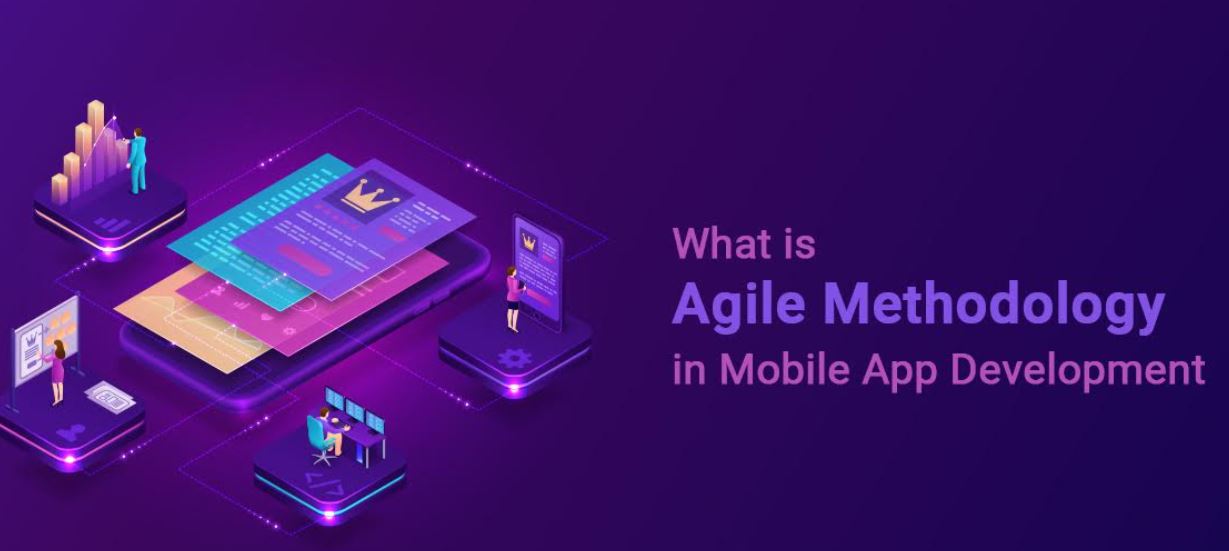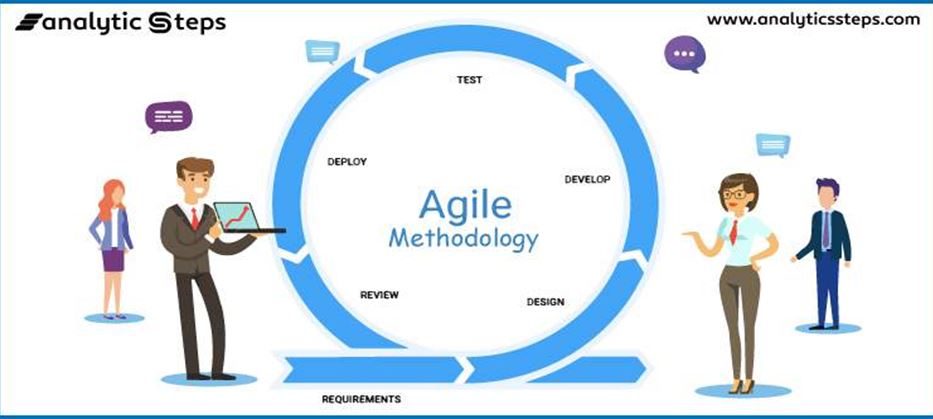
Agile Methodology – Accretive & Iterative Approach for Mobile App Development
Different methodologies are adopted for mobile app development based on business demands, software needs, prototyping, mobile app architecture, design and development integration testing, market analysis, etc.
When it comes to agile methodology, it is more likely to focus on the management and development of integrated and refined software.
It helps in mitigating various mistakes by enabling several iterations and revisions. It involves the contribution of all the team members by a collaborative approach. Each individual has assigned responsibilities throughout the whole development cycle.
According to Gartner, the old-school mobile app development methods will not work nowadays due to device diversity, network connectivity, and other mobile-specific considerations.
So what is Agile Technology in App Development Process?

Agile methodology is all about dividing app development tasks into a step-by-step process. It aids in organizing app development phases throughout the software lifecycle. Whether you want to,
| ✅ Inform the client about changes you have made in any phase ✅ Integrate changing requirements of the client in any phase ✅ Measuring progress ✅ Collaboration between client and developers ✅ Accretive app development with planned time frames |
You can make any tweaks in between the ongoing development process. It helps to organize the work of different development teams and manage their tasks effortlessly.
How does Agile Methodology Actually Work?
When you have plenty of tasks to complete but lack enough time, what would you prefer to do? You will list out all the activities, set priorities, assign enough time frames, and try to conclude it. Agile methodology is also working in the same way.
Suppose a client wants you to develop a mobile app for their business. Below are the steps you will follow with agile methodology.
|1. Make a list
This step includes meeting a customer with a Mobile App Proposal consists of all the details and features they want to develop. This mobile app RFP with requirements and functions becomes the to-do list for the overall project.
|2. Estimating and sizing
After listing every essential thing, you will decide the size of stories and come up with the estimation of how long each story would take to conclude.
|3. Set priorities
After an estimation, you ask the client for his preferences. Ask them to prioritize the user base so that you can prioritize your development tasks accordingly.
|4. Execution
Now you can start from the top with the high-priority tasks and work your way down for the least priority tasks. After every execution, you can take feedback from the client.
|5. Updating plans
After you begin with delivering the product, the client will come up with some modifications. You will add these changes to your list and prioritize the tasks again. In this way, a prioritized list will help you to define your work order.
Agile methodology aids build a culture and provide an environment where real solutions develop.
Reasons why you should opt for Agile Methodology
|1. Real-time planning
Planning for the whole app development process all-in-one is a tough nut to crack. With agile, you can make a plan for each phase individually. You can save extra time as well as resources from solving bugs and making changes in functionalities. It also helps you to decide the overall budget.
|2. Sprint by sprint
The agile methodology enables you to develop a mobile app sprint by sprint. There is no need to finish the app development process quickly. You can analyze and test each functionality after each sprint to find out if it is working or not.
|3. Perform changes instantly
It is quite convenient to make changes immediately in any of the sprints without affecting any other sprint. You can save time, money, and resources needed in revisions after the completion of app development.
|4. Manage risks effortlessly
When you follow agile methodology, you can release apps step-by-step. Initially, you can release a beta version and try to discover any remaining bugs. Based on that, developers can make changes to the app. So, potential risks can be addressed in advance.
|5. Immediate feedback from customer
The agile methodology enables developers to always be in touch with the client. Inform a client about the completion of any task and ask to review it. If a client needs any modification in features or functionalities, it can be done quickly without disturbing other ongoing processes. Feedback helps to enhance the app at every phase by keeping transparency with a client.
How is agile beneficial over traditional methodologies?
|1. Flexibility
Agile methodology is more flexible compared to the traditional waterfall approach when it comes to making changes. If you need to experiment with something out of the box, you can do it with the agile method. You can focus on product improvement rather than following a strict structure. Any last-minute changes can perform.
|2. Transparency
With agile methodology, clients and developers stay connected through any development phase. Both can discuss and make decisions to enhance app quality in any phase. Transparency is 100%, and there is nothing to hide.
|3. Ownership
In the old methods, only management had all the rights to make any changes in the project. Their permission is required. Customers are involved just in the planning phase and after delivering a project. But in agile methodology, all the team members have a significant role. Anyone can see the progress from start to end.
|4. Feedback scope
In the traditional approach, everything is well-defined before starting the project. There was pressure to complete the project within a decided time frame. So, any changes or feedback got overlooked. But with agile methodology, feedback is always welcomed to enhance app quality.
Types of Agile Development
|1. Adaptive Software Development
This method is utilized for small-sized projects developed within a short time and has fluctuating requirements. It just needs assumption, collaboration, and learning to build these sorts of mobile apps.
|2. Crystal Methods
This method utilizes when the focus is on people, interaction, frequent delivery, frequent integration, community, abilities, and close communication.
|3. DSDM (Dynamic Systems Development Method)
DSDM assures at each step that it gets completed enough to move to the next step. It consists of 7 phases. Pre-project, feasibility study, business study, functional model iteration, design & build iteration, implementation, and post-project.
|4. Feature Driven Development
In this method, a model is designed that defines different features and their iteration. It contains various processes such as the development of the overall model, listing of features, planning, designing, and building by feature.
|5. Lean Development
This method manages and deals with risks and turns them into opportunities. It mitigates wastage, creates knowledgebase, defers commitment to limit the mistakes, delivers rapidly, builds quality, and optimizes everything.
|6. XP (Extreme Programming)
This method focuses on projects rather than documentation as it follows the principle of simple code and design. So the people who join at the later stage can also easily understand. XP emphasis on teamwork, collaboration, and feedback.
Constant development and customer satisfaction are at the core of XP. It helps with changing demands of customers. Customer feedback is achieved through unit testing.
|7. Scrum
It is one of the widely used agile methods represented by various development cycles. Scrum divides the development phases into stages called sprints. The development time for each sprint is increased and dedicated, thus controlling only one sprint at a moment.
Scrum helps developers set priorities to ensure that any unfinished or delayed sprints get more attention. The scrum team consists of project roles like scrum master and a product owner with steady communication on the everyday scrum. Activities are organized to design the best way to execute the sprint.
Getting Agile with Mobile App Proposal
Following an agile approach is all about transforming how mobile app proposal teams deal with their workflow. As businesses become more and more cross-functional, the proposal processes also become the same.
Using an agile method with a scrum framework that can endorse the operations and solutions, will provide better insights and progress for effective, quick, and more successful mobile app proposals.
Summing Up
Entrepreneurs never risk handing over their mobile app development project into the wrong hands. If you want to gain user attention and are keen to deliver a supreme user experience, you must practice agile methodology.
You already know that a mobile app is just not a project, it is one of the ways to succeed in this digital market.
